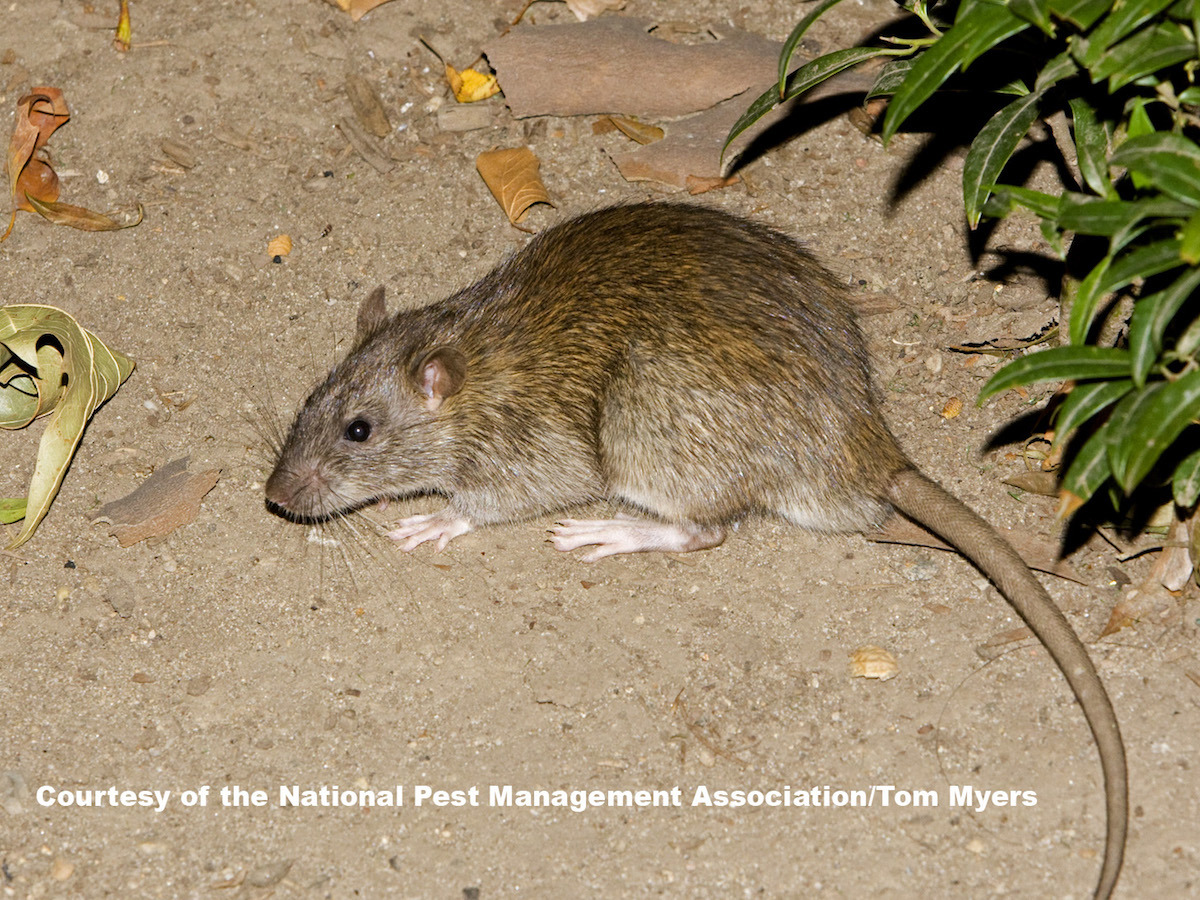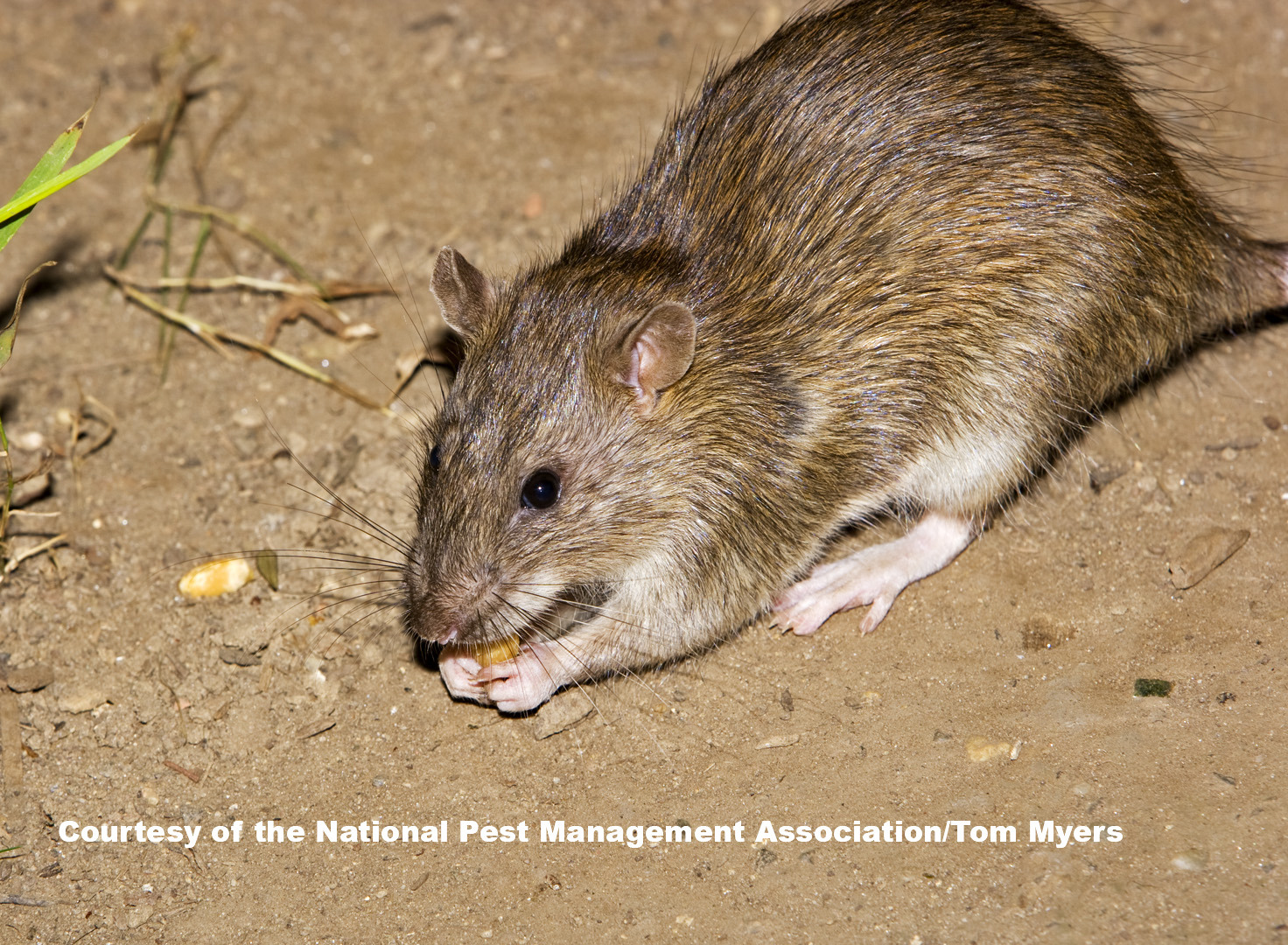Norway Rats Rattus norvegicus

Norway Rat Identification
Color: Brown with scattered black hairs; gray to white underside
Size: 7-9 ½ inches long
Legs: 4
Antennae: No
Shape: Long, heavily bodied; blunt muzzle
Region: Found throughout U.S.
What Are Norway Rats?
The Norway rat commonly referred to as the street or sewer rat, is believed to be of Asian origin, arriving in the U.S. on ships from other countries in the 1700s. Today, Norway rats are found throughout the world. Norway rats have fairly poor vision and are colorblind. Despite this, their other senses, including hearing, smell, touch and taste are keen. Although not extremely agile, they are capable of running, climbing, jumping and swimming. Norway rats are known to cause damage to properties and structures through their gnawing. Read more to learn about Norway rats, including Norway rat control.

What Do Norway Rats Look Like?
Norway rats have bristly brown fur, with black hairs dispersed throughout their coat. Their underside tends to be lighter, with gray to off-white coloring and even yellow tones. Norway rats have small eyes and ears, and their tails are shorter than the length of their head and body coupled together.
Norway rats are social pests, often building shelters close to one another. This means that where there is one burrow, there are likely others close by. Their burrows have at least one entrance hole and a minimum of one bolt-hole, or emergency exit, which is often hidden under grass, debris and other materials.
When outdoors, Norway rats tend to live in fields, farmlands and structures. They frequently burrow in soil near riverbanks, in garbage and woodpiles, under concrete slabs, and along railroad embankments, streams and riverbanks. Norway rats typically enter homes in the fall when food and water sources become scarce outside. These rodents can fit through a hole the size of a quarter, easily gaining entry into homes to nest. Once inside a home, Norway rats often nest in basements, piles of debris or undisturbed materials. They also enjoy nesting on the ground floor and on the lower floors of buildings, as well as in sewers. Although they prefer settling on lower levels, Norway rats may also occasionally reside in attics, on roofs and other high points.
Norway rats are nocturnal. They characteristically forage at dusk, and then again prior to dawn. However, they eat several times each night and during the daytime. These rats will carry the food they find to less busy areas for consumption, or to hoard. Adaptable feeders, Norway rats eat practically anything but show a preference to meat, fish and cereal. This differs from the eating habits of roof rats, which prefer fruits and vegetables. Dog food is also a favorite menu item for Norway rats.
These rodents are known to gnaw through almost anything – including plastic or lead pipes – to obtain food and water sources for survival. Norway rats almost always require a water source separate from the liquid they may find in food. They are creatures of habit. If they eat something they dislike, Norway rats will quickly develop an aversion to that food and search for an alternative option. Once they find a favorable food source, Norway rats will return time and again. They tend to follow the same route—usually along a vertical pathway that they feel out with their long whiskers—between their shelter and sources of food and water. They will typically travel about 100 to 150 feet away from their shelter for food and water, although this range is smaller in urban areas where they will venture only about 25 to 100 feet away from their home.
Thanks to this propensity to gnaw through almost anything, Norway rats can cause damage to properties and structures, making them a threat to homeowners. Equally important, Norway rats are carriers of serious diseases, including jaundice, rat-bite fever, cowpox virus, trichinosis and salmonellosis. Learn more about the health threats posed by rodents in the article, “An Overview of the Real Health Risks Posed By Mice and Rat Infestations.” Norway rats also pose other health threats, as they can contaminate food and introduce fleas into a home.
There are several telltale signs that a home has a Norway rat infestation. Gnaw marks throughout the house are one clue of the presence of Norway rats. New bite marks or holes tend to be rough, whereas older ones are smooth from wear and are also often greasy. Spotting droppings, which are capsule-shaped, is another key indicator of a Norway rat problem. Norway rats’ droppings have blunt ends, while those of roof rats have pointed ends. Other signs include footprints, greasy and dark rub marks from oily fur against pathways, burrows, runways with stacked food, and damaged or rummaged-through food products. Check out this infographic on the signs of a rodent infestation for more information.
Norway rats can reproduce quickly, giving birth to about three to six litters each year. This makes it all the more important to take proactive measures, such as Norway rat control, to prevent an infestation from taking root.
Norway rats are often drawn to piles of wood, so homeowners should keep firewood stored well away from the structure and remove debris piles to reduce ideal nesting spots. It is also important to seal any holes on the outside of the home with steel wool to block potential points of entry. It is best to eliminate sources of moisture like leaky pipes, especially in crawl spaces and basements, as the dampness can attract Norway rats in search of drinking water. All food products should also be properly sealed in containers to avoid any contamination, which can lead to disease transmission. Likewise, garbage should be tightly enclosed in trashcans that are regularly emptied outside of the home so as not to serve as food attractants. Homeowners are also encouraged to keep a regular eye out for signs of a rodent infestation and contact a licensed pest control professional if one is suspected.
The safest and most effective way for homeowners to get rid of Norway rats is to work with a licensed pest control professional. A pest control professional will assess the situation and develop an integrated pest management (IPM) plan to successfully eradicate the rodents.
You can find one near you with the helpful zip code search below.
